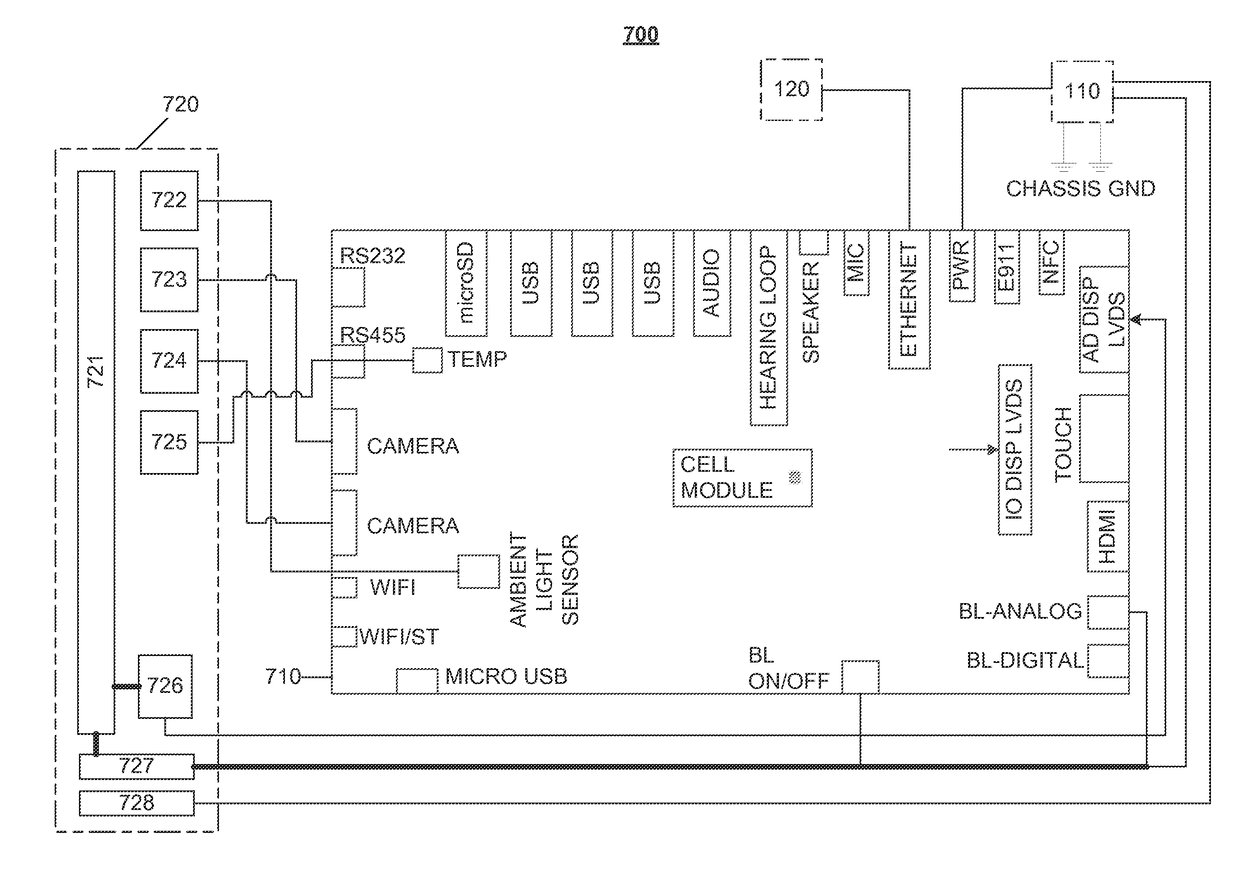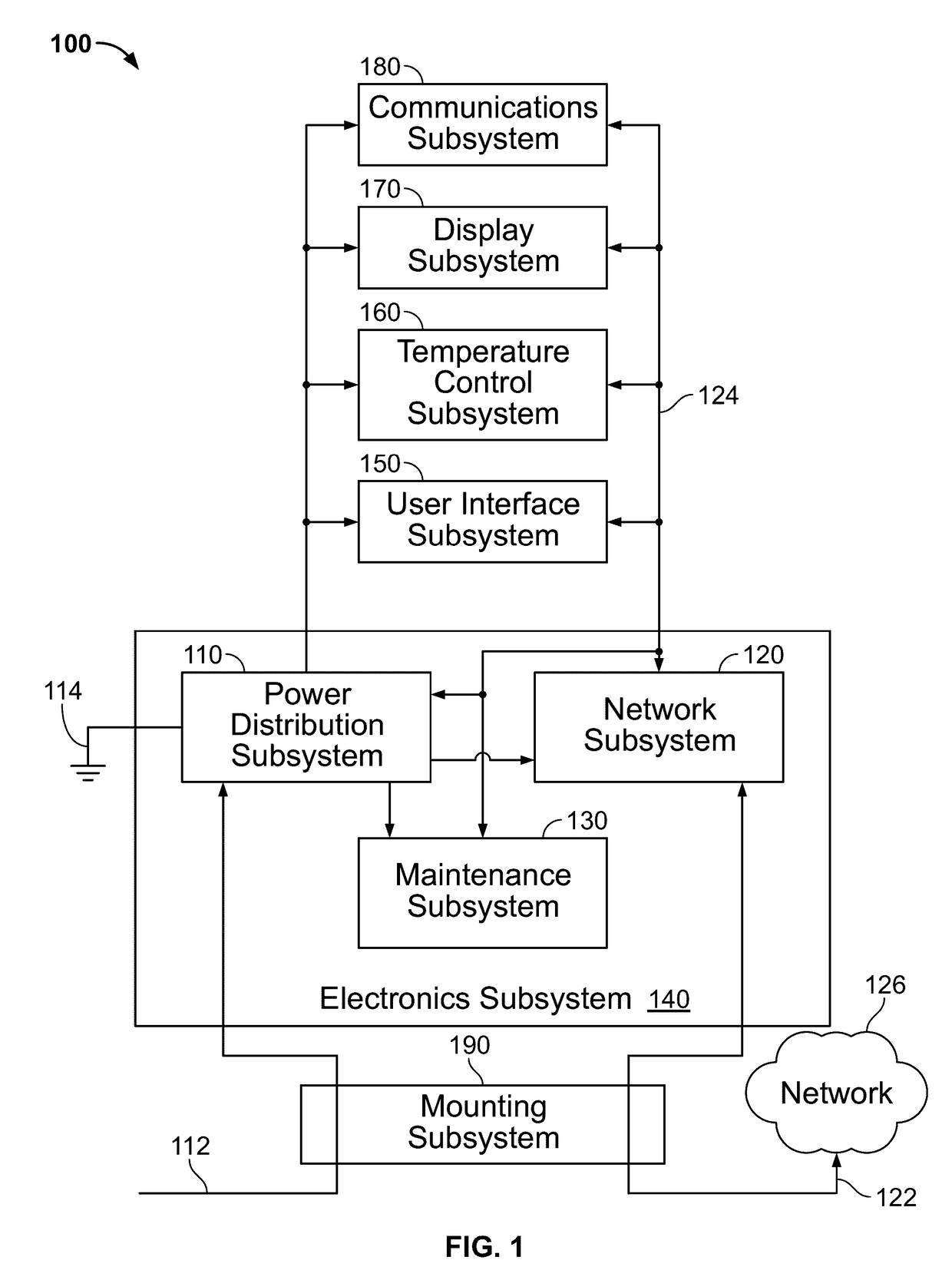Techniques and apparatus for controlling the temperature of a personal communication structure (PCS)
a technology of personal communication and apparatus, applied in the direction of electric digital data processing, instruments, computing, etc., can solve the problems of reducing the number of public telephone booths, reducing the service life of the remaining booths, and unable to allow users to access internet-based data and services. , to achieve the effect of enhancing the enhancing the public access to communication networks, and expanding network coverag
- Summary
- Abstract
- Description
- Claims
- Application Information
AI Technical Summary
Benefits of technology
Problems solved by technology
Method used
Image
Examples
Embodiment Construction
Overview of Personal Communication Structure (PCS)
[0052]FIG. 1 illustrates a personal communication structure (PCS) 100, according to some embodiments. PCS 100 enhances access to communication networks in public or semi-public places. In some embodiments, PCS 100 includes an electronics subsystem 140, a user interface subsystem 150, a temperature control subsystem 160, a display subsystem 170, a communications subsystem 180, and / or a mounting subsystem 190. Electronics subsystem 140 may include a power distribution subsystem 110, a network subsystem 120, and / or a maintenance subsystem 130. These and other components of PCS 100 are described in further detail below.
[0053]Power distribution subsystem 110 distributes electrical power to components of PCS 100. Power distribution subsystem 100 may provide power to network subsystem 120, maintenance subsystem 130, other components of electronics subsystem 140, user interface subsystem 150, temperature control subsystem 160, display subsys...
PUM
 Login to View More
Login to View More Abstract
Description
Claims
Application Information
 Login to View More
Login to View More - R&D
- Intellectual Property
- Life Sciences
- Materials
- Tech Scout
- Unparalleled Data Quality
- Higher Quality Content
- 60% Fewer Hallucinations
Browse by: Latest US Patents, China's latest patents, Technical Efficacy Thesaurus, Application Domain, Technology Topic, Popular Technical Reports.
© 2025 PatSnap. All rights reserved.Legal|Privacy policy|Modern Slavery Act Transparency Statement|Sitemap|About US| Contact US: help@patsnap.com



